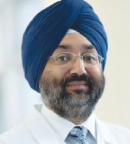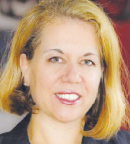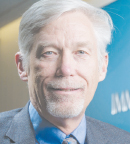With the U.S. Food and Drug Administration (FDA) approvals of tisagenlecleucel (Kymriah)1 and axicabtagene ciloleucel (Yescarta),2 chimeric antigen receptor (CAR) T-cell therapy has moved into real-world practice, offering new potentially curative options for incurable hematologic malignancies. Its unique mechanism and clinical potential recently garnered the therapy recognition by ASCO as 2018 Advance of the Year.3 At the same time, some uncertainties surrounding the toxicities and logistics of CAR T-cell therapy are tempering its uptake and clouding its future.
Feasibility and Availability

What exactly ends up being the reimbursement for this—if you look at the whole package—is still to be determined.— Navneet S. Majhail, MD
Tweet this quote
“From a feasibility perspective, I don’t foresee any major challenges to CAR T-cell therapy,” commented Navneet S. Majhail, MD, Director of the Blood & Marrow Transplant Program, Cleveland Clinic, Ohio. “Not to minimize what it will take to get it to the clinic, but we have a nice model already in place that we’ve practiced for 40-plus years, and that is blood and marrow transplantation. Conceptually, CAR T-cell therapy is fairly similar to what we have done in transplant all along.”
For now, at least, delivery of CAR T-cell therapy will likely be restricted to roughly 60 transplant centers (see page 49), as they have the accreditation, expertise, health professional teams, and infrastructure to give the therapy safely and effectively, he said. “We know these therapies are not easy to tolerate, and they have a lot of potential side effects. You have to have all the quality processes, the basic infrastructure, to make it happen.”

The onus is going to be on professional societies to bring experts together to look at how to educate oncologists and what the right algorithm is for treating these patients.— Catherine M. Bollard, MD, MBChB
Tweet this quote
“We are still not completely sure how the CAR T-cell field is going to look in many respects,” commented Catherine M. Bollard, MD, MBChB, Director of the Center for Cancer and Immunology Research at the Children’s Research Institute and Professor of Pediatrics and Immunology at George Washington University, Washington, DC.
“With at least two companies offering CD19 CAR T-cell therapy, certainly we’ll be able to see what that model looks like with centralized manufacturing by pharma requiring the distribution of large numbers of patient-specific products around the world,” she elaborated. “The bigger question is whether such a centralized manufacturing strategy will continue to be the model, or will complex cell therapies be manufactured using a ‘good manufacturing process in a box’ concept, meaning every treatment center has its own closed system ‘box’; in this box, the patient cells, vector, and cytokines are added, and 1 to 2 weeks later, out comes the product. Needless to say, we really are in exciting times when it comes to cell therapies and will need to see what sort of model comes out of it all. At the end of the day, it may be different models for different types of novel cell therapies.”

The tricky part is this is one of the first therapies ever to put the manufacturer directly in line with the patient, so there are a lot of questions that remain about patient selection.— David G. Maloney, MD, PhD
Tweet this quote
“This will be a test of the system. To get this model to work, companies that have these approved products will have to be able to make them in a timely fashion, I would say within 3 weeks of collection. And they will have to do it reliably with a very, very high success rate,” commented David G. Maloney, MD, PhD, a member of the Clinical Research Division and Medical Director of Cellular Immunotherapy, Fred Hutchinson Cancer Research Center, Seattle.
“Initially, CAR T-cell therapy should be done in centers that have clinical trial experience with this product, and those are largely going to be transplant centers,” he concurred, particularly because early toxicities such as cytokine-release syndrome can be severe. “There is definitely a learning curve of being able to recognize cytokine-release syndrome and to deal with it appropriately, both in terms of medications and management.”
It is important to note that in approving CAR T-cell products, the FDA has mandated accompanying Risk Evaluation and Mitigation Strategies programs,4 Dr. Maloney noted. These programs aim to reduce the risks of cytokine-release syndrome and neurotoxicity, in part by ensuring both awareness of appropriate management and availability of tocilizumab (Actemra) to treat the syndrome.
Referral and Follow-up After CAR T-Cell Therapy
Educating community oncologists will be key to optimizing the effectiveness and safety of CAR T-cell therapy, because patients are typically referred to centers for the short, intensive period of therapy and then return to their local oncology team thereafter, according to Dr. Majhail.
“I see two aspects of this education. One is the upfront aspect, as to who gets referred to us and when, and the other is long-term follow-up, what are the things they need to be on the lookout for so they can manage these patients appropriately,” he elaborated. “All these complications can happen down the road. Also, oncologists need to know how to monitor these patients for recurrence or relapse.”
As more and more companies move toward commercialization of cell therapies, we will start to see the price tag fall. I firmly believe that.— Catherine M. Bollard, MD, MBChB
Tweet this quote
Initially, CAR T-cell therapy was approved for a small, well-defined group of patients with acute lymphoblastic leukemia (ALL), so identifying appropriate patients for referral was fairly straightforward, according to Dr. Bollard. However, that is changing with broader approval of this therapy for certain types of non-Hodgkin lymphoma and, potentially in the future, chronic lymphocytic leukemia. “Professional societies need to work together on treatment algorithms, defining when and how we deliver these novel agents,” she said.
“When you are dealing with a biologic immunotherapy, patients who have seen a lot of previous therapy may have a lesser response to T-cell products than patients who have seen only limited chemotherapy but are refractory,” she added. “Their immune system may be better preserved and therefore easier to manipulate to be effective.”
“What is important is for people to recognize where T-cell therapy fits in and when to refer patients, before they have failed to respond to every available known therapy. Clearly, there is a better chance of this working in patients who have reasonable hematopoietic function and less disease,” Dr. Maloney agreed.
When it comes to follow-up, community oncologists must be aware of the unique risk for ongoing B-cell depletion with CD19-directed CAR T-cell therapies, because CD19 is expressed on normal B cells, he noted. Therefore, patients require monitoring of immunoglobulin levels and may need intravenous immunoglobulin transfusions if they become hypogammaglobulinemic.
Guidelines and Accreditation
Professional organizations—the American Society of Hematology, American Society for Blood and Marrow Transplantation (ASBMT), American Society of Gene and Cell Therapy (ASGCT), the Foundation for the Accreditation of Cell Therapy (FACT), and the International Society for Cellular Therapy (ISCT), among others—are working to formulate guidance on T-cell therapies (especially CAR T-cell therapies). Additionally, a multi-institutional, multidisciplinary expert group has drafted guidelines specifically for monitoring, grading, and managing its toxicities.5
“The onus is going to be on the professional societies to bring experts in the field together to look at how to educate oncologists and what the right algorithm is for treating these patients, given there are a lot of novel agents out there right now,” Dr. Bollard commented.
I do believe there will be a group of patients for whom CAR T-cell therapy by itself may be curative. We still need more research to identify who those patients are.— Navneet S. Majhail, MD
Tweet this quote
FACT has been key in advancing the safe and effective delivery of immune effector (eg, CAR T-cell) therapy. This Foundation has long defined standards for blood and marrow transplantation centers to become accredited to deliver that therapy and recently set forth additional standards specific to the delivery of novel immune effector cells, such as CAR T cells.6
“The whole rationale behind the FACT accreditation mandate is to ensure there are defined standards in place. So its initiative is critical to be able to broaden the applicability of these sorts of complete immune cell therapies outside of the major centers,” she said.
“Most transplant centers are becoming accredited by FACT for the additional cell-derived therapy portion of the standards as well,” Dr. Maloney observed. “For FACT accreditation, you have to have aggressive standard operating procedures in place, dealing with all kinds of things, including admitting patients from the emergency room, recognizing cytokine-release syndrome, and having ICU care.”
Cost and Insurance Coverage
A major concernwith CAR T-cell therapy is its financial toxicity. Tisagenlecleucel, for example, is priced at $475,000 per infusion. “Something novel the manufacturer has done is attempted a model of value-based pricing: Patients only pay if they respond by 1 month. I applaud them for thinking of a model like this,” Dr. Majhail commented. Axicabtagene ciloleucel is priced at $373,000 per infusion. (See page 44 for more about the cost and value of CAR T-cell therapy.)
However, the total cost of CAR T-cell therapy is likely to be far higher, as those amounts cover the cell product alone, he cautioned. Patients additionally need examinations, an extensive workup, cell collection and processing, and hospitalization for several days; furthermore, they may experience complications that are costly to treat, such as severe cytokine-release syndrome, which requires tocilizumab therapy.
“The ASBMT has been actively engaged with the private payers as well as the Centers for Medicare & Medicaid Services (CMS) to guide some of the reimbursement policies around CAR T-cell therapy,” noted Dr. Majhail, who serves as the Society’s President-Elect.
I think CAR T cells are here to stay, certainly for the hematologic malignancies.— David G. Maloney, MD, PhD
Tweet this quote
Private payers will likely look to blood and marrow transplantation as a model for reimbursement for CAR T-cell therapy, he speculated. “What exactly ends up being the reimbursement for this—if you look at the whole package—is still to be determined. I don’t think we have good clarity from the payers about this yet.”
On the CMS front, ASBMT helped develop the ICD-10 procedure codes for inpatient autologous CAR T-cell therapy infusions: XW033C3 (for peripheral vein administration) and XW043C3 (for central vein administration). “That’s a big success for us,” Dr. Majhail said. “But we still don’t have the coding infrastructure to cover complications like cytokine-release syndrome, which will be used, for example, to justify the utilization of tocilizumab to combat this complication.” In addition, there is no appropriate diagnosis-related group for CAR T-cell therapy.
“It is a big question as to whether insurance will pay or not for CAR T-cell therapy. This is a large price tag fall,” Dr. Bollard acknowledged.
As President of the International Society for Cellular Therapy, Dr. Bollard and her colleagues are working with companies and academicians to bring more CAR T-cell and related products to the market, to generate competition. “This is paving the way for more and more companies to move toward the commercialization of cell therapies, and then we will perhaps start to see the price tag fall,” she asserted.
Success Rate
Another uncertainty is the success rate of T-cell production in real-world practice. On clinical trials of CAR T-cell therapy among well-selected patients, the rate of success (growth of cells in culture and readiness for patients within 6 weeks) has been about 65%.
“The tricky part is this is one of the first therapies ever to put the manufacturer directly in line with the patient, so there are a lot of questions about patient selection. Obviously, on clinical trials, patients have to fulfill a large number of criteria, but an FDA label doesn’t usually go into that kind of detail,” Dr. Maloney commented. “So there is going to be a learning curve, and I think some discretion, and each center will likely have to come up with some of its own standards on how it will use these new products.”
“In the postlicensing phase, we are seeing the development of well-designed clinical trials to evaluate how to bring this therapy to patients much earlier into the disease process, which will make the rate of success for T-cell manufacture much greater, because patients won’t have seen so much cytotoxic chemotherapy previously,” Dr. Bollard said. “Hopefully, this will also inform critical and predictive markers for success. The real answer is, we don’t know yet, but the onus is on all of us—academia and industry—to perform well-designed clinical trials to answer these questions.”
Impact on Use of Allogeneic Transplant
Yet another gray area is how CAR T-cell therapy will fit with allogeneic transplant, according to Dr. Majhail. “For some patients, it might be a bridge to transplant; for others, we have seen long-term responses,” he said. “I do believe there will be a group of patients for whom CAR T-cell therapy by itself may be curative. We still need more research to identify who those patients are. But down the road, it’s very possible as the whole field advances that CAR T-cell therapy may replace allogeneic transplant altogether for a group of patients.”
“The use of CD19 CAR T cells for pediatric patients with ALL has also shown appreciable success, and, therefore, I can actually see a day when this therapy might replace allogeneic stem cell transplant,” Dr. Bollard agreed. On the other hand, the CAR T cells being developed to target acute myeloid leukemia are viewed more as a bridge to transplant, possibly because of the difficulty thus far of sparing normal cells in that malignancy.
“In some ways, CAR T-cell therapy is better than allogeneic transplant, at least in reducing disease,” Dr. Maloney maintained. “We already know that; patients being treated on these clinical trials are not even eligible for transplant because they have relapsed, refractory disease.”
Most of the larger lymphoma trials of CAR T-cell therapy have about 1 year of follow-up, so it remains unclear as to whether it is curative, he said. At the end of the day, oncologists will likely take a disease-specific approach when considering allogeneic transplant in patients who have a complete remission after this therapy.
“My personal bias is there still is a role for an allogeneic transplant in a young person with ALL who has gotten into complete remission with CAR T cells, but there are no randomized trials yet to know that,” Dr. Maloney said. “We do know that some patients relapse after CAR T cells, and they can relapse because they lose the target (for example developing CD19-negative disease), and in those cases, a transplant would potentially be able to prevent that.”
Future Outlook
“We have around 200 blood and marrow transplantation centers in the United States, and they are pretty successful in providing adequate access to patients who need a transplant for hematologic malignancies,” Dr. Majhail commented. “Ultimately, it is possible that all of these centers would be providing the CAR T-cell therapies we have today.” Ten years from now, the therapy will likely be safer and more feasible, possibly enabling its diffusion to smaller centers, and the field will probably have a much better understanding of which patients benefit, he added.
Insurers’ stance on CAR T-cell therapy will largely dictate its future, according to Dr. Bollard. “If they will pay, I predict there will be a real push to commercialization for a wealth of novel cell therapies. If they won’t pay, then more and more centers might develop products for their own patients,” she said, using either their own good manufacturing process–compliant protocols or utilizing the “good manufacturing process in a box” concept. “That’s why I find it exciting, because we really don’t know yet. We are at this point of great discovery, especially as we extend this approach to nonhematologic cancers.”
“If I were guessing about the future, it could easily be that a patient receives a diagnosis of lymphoma and one of the first things to be done is to collect T cells, from which you would make one, two, or three different CAR T cells, potentially; after the first round of chemotherapy, the patient may receive CAR T cells, which lead to remission,” Dr. Maloney predicted.
“I think CAR T cells are here to stay, certainly for the hematologic malignancies. And I have no doubt they are going to play an earlier and earlier role in the management of ALL, certainly in non-Hodgkin lymphomas, probably nearly all types,” proposed Dr. Maloney. “Now the big question is whether they will work in the solid cancers.”
DISCLOSURE: Dr. Majhail has served as a consultant for -Anthem, Inc. Dr. Bollard reported no conflicts of interest. Dr. -Maloney has served on advisory boards for Kite Pharma and -Novartis and has received research support from Juno Therapeutics and Kite Pharma.
REFERENCES
1. U.S. Food and Drug Administration (FDA): FDA approval brings first gene therapy to the United States. August 30, 2017. Available at www.fda.gov/NewsEvents/Newsroom/PressAnnouncements/ucm574058.htm. Accessed April 5, 2018.
2. U.S. FDA: FDA approves CAR-T cell therapy to treat adults with certain types of large B-cell lymphoma. October 18, 2017. Available at www.fda.gov/NewsEvents/Newsroom/PressAnnouncements/ucm581216.htm. Accessed April 5, 2018.
3. ASCO: Clinical Cancer Advances 2018. Available at www.asco.org/research-progress/reports-studies/clinical--cancer-advances-2018/advance-year. Accessed April 5, 2018.
4. U.S. FDA: Approved Risk Evaluation and Mitigation Strategies (REMS). Available at www.accessdata.fda.gov/scripts/cder/rems/index.cfm?event=indvremsdetails. Accessed April 5, 2018.
5. Neelapu SS, Tummala S, Kebriaei P, et al: Chimeric antigen receptor T-cell therapy: Assessment and management of toxicities. Nat Rev Clin Oncol 15:47-62, 2018.
6. Maus MV, Nikiforow S: The why, what, and how of the new FACT standards for immune effector cells. J Immunother Cancer 5:36, 2017.

